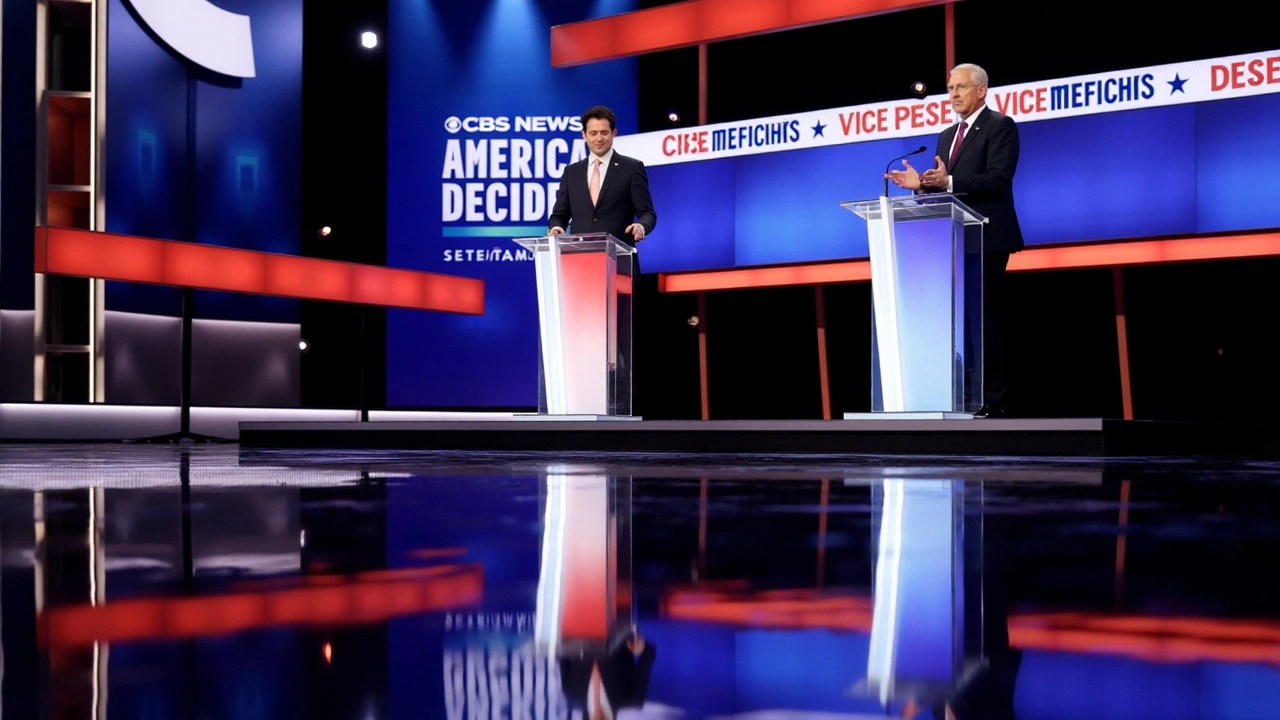Introduction to the Vice Presidential Debate
The stage was set for a significant political event this past Tuesday night as the vice presidential candidates, Republican JD Vance and Democrat Tim Walz, squared off in what was the first and only debate of its kind for this election cycle. Traditionally, vice presidential debates have not been deemed as pivotal in swaying voter decisions, yet this particular face-off revealed a tapestry of strategies, personas, and the nuances of political demeanor worth dissecting.
Indeed, much can be drawn from such exchanges, especially within a climate of heightened political awareness in America. This debate did more than just showcase two competing agendas—it served as a point of reflection on past rhetoric, present stance, and future implications for the broader political landscape. While it might not bring seismic shifts to voting trends, the debate underscored pivotal points about both candidates, particularly JD Vance who embarked on something of a reconciling exercise between his past and present public personas.
JD Vance's Newfound Refined Identity
Historically, JD Vance has not shied away from provocative rhetoric, especially given his fiery supportive alignment with Trump's MAGA movement. However, during the debate, Vance exhibited a more polished demeanor, which caught many political analysts by surprise. There was certainly a noticeable juxtaposition between this newfound polish and the previously expected fervor. This shift is significant, not merely as a strategic political move, but as a potential guide to future political engagements.
In the debate, Vance extended both respect and gratitude, notably to his opponent Tim Walz and to the broadcasting network CBS. Such gestures might appear minor, yet they hold power in a political climate often marred by grandstanding and animosity. This change suggests a potential expansion of Vance's appeal beyond his base to more moderate, undecided voters who might appreciate bipartisan civility.
Reframing Policy Stances and Political Strategies
The debate took on a new dimension as Vance endeavored to reframe some of the more controversial stances associated with Trump, particularly on vital issues like healthcare and child care. By doing so, he shifted the narrative to question whether the current administration has done enough to address the rising household costs many Americans face. This discussion was tactically placed to highlight a perceived edge Republicans have when it comes to managing economic matters affecting everyday citizens.
This reframing is not merely about policy but about attempting to distance the party image from previous polarizing topics. By channeling discussions over substantial issues like the aftermath of the January 6 events, Vance sought to pivot attention towards the shortcomings of his opponents. These rhetorical maneuvers were intended to create a sense of accountability while fostering discussions over the GOP's proposed solutions.
The Skepticism Towards Experts
Aligned with a broader right-wing sentiment, Vance during this debate expressed clear skepticism toward the reliance on expert opinions—a perspective that is both controversial and yet resonates deeply with a demographic that feels neglected or misunderstood by political elites. This narrative of distrust taps into longstanding dialogues about elitism and disenfranchisement amongst working-class voters.
This rhetoric, while potentially alienating to some, is a calculated risk that could consolidate core support within certain voter segments who perceive these expert opinions as distant or disdaining. The debate served as a platform to amplify these claims, pivoting away from direct policy discussions towards broader philosophical disagreements about governance and societal divisions.
Topics Left Unspoken
As much as what was discussed, it's crucial to also accentuate what was deliberately left unchallenged during the debate. Key contentious topics were conspicuously absent, notably pertaining to Walz's military record and the 'stolen valor' allegations thrown his way. Both candidates also stayed clear from delving into the sensitive issue of the U.S. aid to Ukraine. Despite these being significant talking points with deeply opposing views, they were left untouched.
Equally puzzling was the lack of comprehensive dialogue on Trump's management of the COVID pandemic. Given the pervasive and polarizing nature of the pandemic impacts, its absence at such a high-profile event was palpable. This speaks volumes about political strategies steering agendas away from past critiques to focus on immediate voter concerns.
The Ramifications for Trump's Debate Participation
What this debate means for Trump's own future debate engagements cannot be overlooked. Vance's performance was received favorably amongst conservative commentators, potentially setting the stage for Trump to reconsider his stance on participating in further debates. Such endorsements in conservative circles serve as both support and challenge, as they place expectations on Trump to engage with similar grace and refinement.
While this is just speculation, the influence of this debate is undeniably one of the contributing factors that might affect decision-making processes for future political engagements. Trump's decision could hinge on how these dialogues shape public perception and validation amongst his core supporters.
Conclusion
The vice presidential debate between JD Vance and Tim Walz etched its place not just as a typical political mix-up but as a space where both refinement and restated skepticism coexisted. It offers insights into broader party strategies and the ethos of political dialogue in contemporary America. Throughout this event, challenges were laid, narratives reconstructed, and future political engagements shaped by the perceptions of these leading figures.

Write a comment